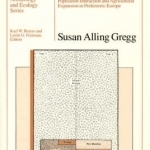Foragers and Farmers
BookThis item doesn’t have any media yet
1988 | History & Politics
Susan Alling Gregg presents a sophisticated model for the transition from hunter-gatherer societies tosettled agricultural communities in prehistoric Europe. She proposes that farmers and foragers must have encountered each other and interacted in a variety of ways for over a millennium as farming systems spread throughout the continent. Several variations of subsistence developed, such as foraging and hunting for part of the year and farming for the rest, or cooperative exchange arrangements between hunter-gatherers and farmers throughout the year. Gregg examines anthropological, ecological, and archaeological dimensions of prehistoric population interaction. She then examines the ecological requirements of both crops and livestock and, in order to identify an optimal farming strategy for Early Neolithic populations, develops a computer simulation to examine various resource mixes. Turning to the foragers, she models the effects that interaction with the farmers would have had on the foragers' subsistence-settlement system. Supporting her model with archaeological, ecological, and ethnobotanical evidence from southwest Germany, Gregg shows that when foragers and farmers occur contemporaneously, both need to be considered before either can be understood. Theoretically and methodologically, her work builds upon earlier studies of optimal diet and foraging strategy, extending the model to food-producing populations. The applicability of Gregg's generalized model for both wild and domestic resources reaches far beyond her case study of Early Neolithic Germany; it will interest both Old and New World archaeologists.
Related Items:
| Published by | The University of Chicago Press |
| Edition | Unknown |
| ISBN | 9780226307367 |
| Language | N/A |
Images And Data Courtesy Of: The University of Chicago Press.
This content (including text, images, videos and other media) is published and used in accordance
with Fair Use.
